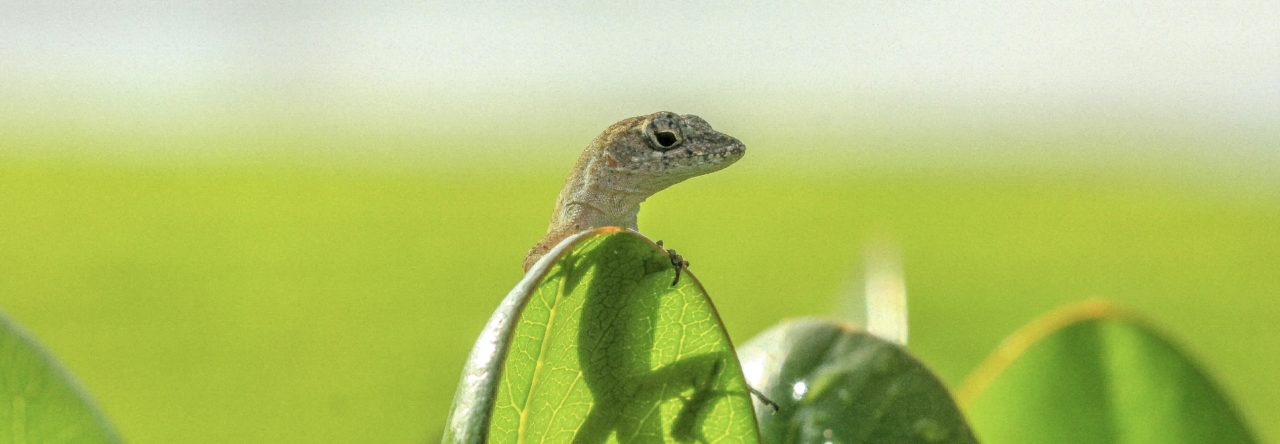The current distribution of plants and animals around the Earth has been strongly influenced by colonization, the ability of organisms to disperse short or long distances on their way to establishing new populations. Over the past several hundred years, humans have increased the rate and distance over which organisms colonize new lands. These human-mediated introductions have reshaped basic patterns of biogeography, a field that investigates the geographical distribution of plants and animals. Some of these invaders cause ecological or economic harm in their new homes and are known as invasive species. In cases where we lack detailed study of an introduced species, we often use high local abundance and rapid spread as proxies for invasiveness. Anoles are one of the most prolific groups of invaders with over 20 different species introduced outside of their native ranges. Most anole invaders originate from Caribbean islands and introductions occur to other islands in the Caribbean, Atlantic and Pacific as well as South Florida, Central America and Southeast Asia. Researchers are studying a diverse array of topics related to anole invasions including the origin of invaders in their native ranges, patterns of introduction and spread, and impacts on native species.

In my lab, we use DNA sequences and other types of genetic data to identify the origin of introduced anoles. Where did invaders originate from in their native range? How many introductions have occurred? How have they spread in their introduced range? You can think of each anole that invades a new area as having their native-range origin encoded in their DNA as if they were carrying a passport from their home region. Using this approach on over a dozen anole species, we in most cases identified the geographic source of introductions, commonly hubs of transport and commerce, which is consistent with anoles being transported by shipping. Many of these anole introductions occurred among Caribbean islands or from Caribbean islands to South Florida. We also found that anole invasions often originate from multiple, geographically and genetically distinct populations in their native range and when thrust together in their introduced range they mix together. This has important implications for evolution, including the potential to enhance adaptation by increasing genetic variation. Our DNA studies also reveal that well-established populations in introduced range can become sources for secondary introductions, which has been termed the bridgehead effect. Brown anoles (Anolis sagrei) are a particularly good example of this phenomenon as introduced populations in South Florida around Miami are likely the source of introductions to Bermuda, Grand Cayman, Grenada, and Hawaii. Similarly, the spread of green anoles (Anolis carolinensis) in the Pacific resulted from a stepping-stone pattern among islands after introduction to the region.

Islands have played a special role in illustrating some fundamental patterns of biogeography, including the well-supported observation that smaller and more remote islands harbor fewer species. However, human-mediated dispersal has increased the occurrence of long-distance and over-water dispersal, which were relatively rare prior to human travel on the sea and in the air. Recent studies of anoles on Caribbean islands show that humans have reduced geographic isolation among islands and economic activities now strongly influence patterns of anole biogeography. Islands also provide excellent arenas for experimental investigation of the consequences of anole invasions for native species. After invasive brown anoles arrived on small islands off the Florida coast, native green anoles shifted their habitat use to higher perches, presumably to reduce competition with lower-perching brown anoles. Within a mere 20 generations, green anoles adapted to their more arboreal circumstances by evolving larger toepads, which should allow them to cling better to the more risky higher perches. This is one of the best examples of rapid evolution caused by competition between an invader and a native species. Researchers are interested in studying anole invasions to gain insight both into basic ecological and evolutionary processes, such as species interactions and adaptation, and to mitigate the negative ecological and economic impacts caused by invasive anoles.


















